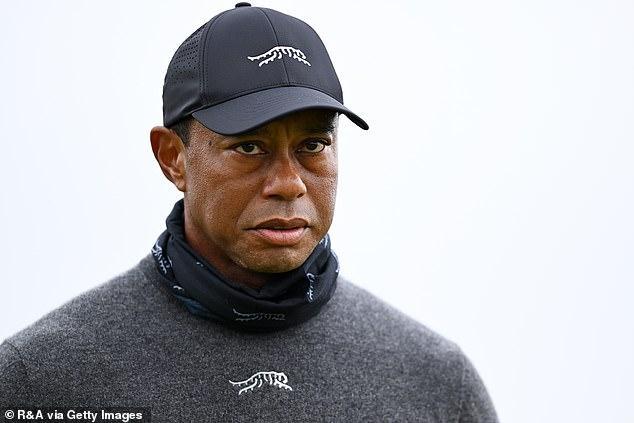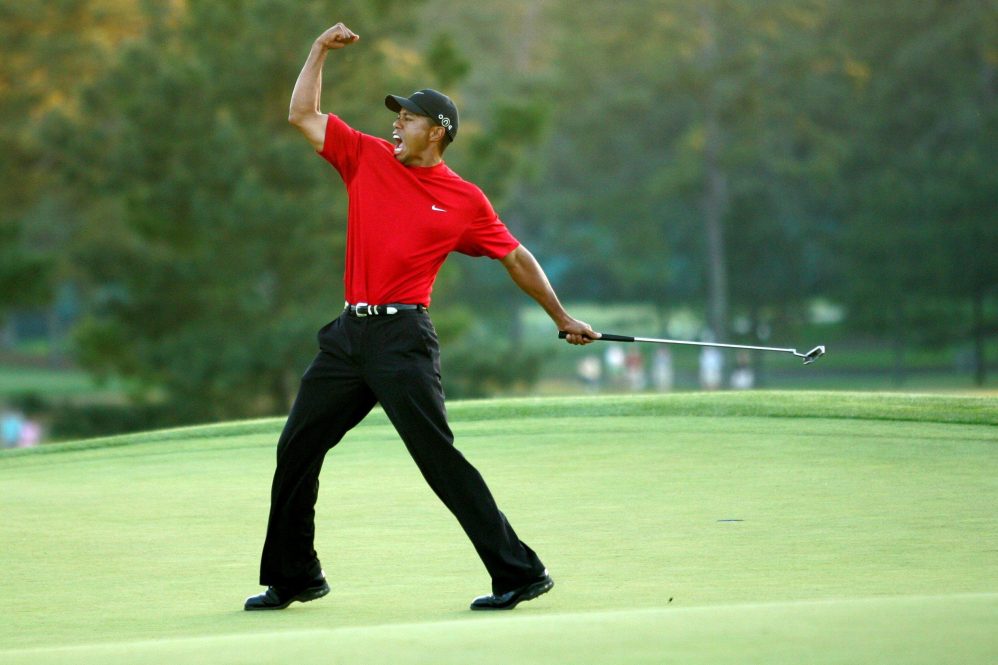Tiger Woods’ Absence from Hero World Challenge: A Focus on Recovery
As the Hero World Challenge approaches, the golf community is left wondering about Tiger Woods’ participation. The tournament, which he has hosted in the Bahamas since its inception in 2000, is set to kick off on December 1st. Unfortunately, due to persistent back issues, Woods will not be competing this year.
Tiger Woods Withdraws from This Year’s Event
Prioritizing Health and Recovery
Sources close to Tiger have confirmed that he has officially withdrawn from the upcoming Hero World Challenge. His ongoing struggles with back pain have made it impossible for him to participate in this prestigious event.
Woods’ absence will undoubtedly be felt at the tournament; his presence always adds a special allure. Despite his efforts and dedication to recovery, he continues to experience discomfort that prevents him from returning to competitive play. Ultimately, prioritizing his health was deemed essential.
While it’s disappointing for fans and players alike that Tiger won’t be present this year, it’s crucial to focus on his long-term well-being. The Hero World Challenge remains one of the highlights of the PGA Tour calendar and will proceed with an impressive lineup of competitors.
The Tournament Will Feature Top Golfing Talent
Even without Tiger’s participation, this year’s event promises excitement as some of golf’s biggest names are set to compete. Stars like Rory McIlroy, Jon Rahm, and Justin Thomas are among those who will vie for victory at Albany Golf Club in the Bahamas.
Fans can look forward to a thrilling week filled with exceptional talent showcasing their skills on one of golf’s grand stages.
Woods Remains Hopeful for Future Competitions
Although absent from this year’s field list for the Hero World Challenge—his name notably missing—Tiger remains optimistic about returning soon. He has been actively practicing and reportedly making strides in his recovery process.
A final decision regarding his participation in future tournaments is expected closer to their respective start dates. If all goes well with his rehabilitation efforts, fans may soon see him back where he belongs—on the course competing at a high level once again.
The golfing world eagerly awaits news of Tiger’s return as they continue supporting him through these challenging times.
A Legacy Beyond Competition
Tiger Woods’ impact on golf transcends mere statistics or titles; it lies within how he inspires both fans and fellow golfers alike through resilience and determination.
As we await further updates regarding his health status and potential return dates for competition play,
the focus remains firmly placed on ensuring that when he does come back,
he does so fully prepared both physically and mentally.

Tiger Woods Withdraws from Hero World Challenge: Focused on Back Recovery
Background on the Hero World Challenge
The Hero World Challenge is an annual golf tournament hosted by Tiger Woods in the picturesque Bahamas. Since its inception in 2000, the event has attracted top-ranked golfers from around the world, making it a highlight in the golf calendar. This year’s tournament is scheduled to begin on December 1st, but Woods’s recent withdrawal raises questions about the field and the future of golf tournaments organized by him.
Tiger Woods’s Health Journey
Tiger Woods has faced numerous injury challenges throughout his illustrious career, particularly concerning his back. With multiple surgeries and extensive rehabilitation efforts, the golfing legend has fought to return to form. Unfortunately, sources indicate that despite his efforts, Woods’s back is not sufficiently healed to handle the physical demands of competitive golf at the highest level.
Reasons for Withdrawal
- Ongoing Recovery: Woods is prioritizing his long-term health, which remains a top concern following his recent surgeries.
- Competitive Standards: Competing in the Hero World Challenge requires readiness to face some of the world’s elite golfers, and Woods is keen to ensure he can perform up to his standards when he returns.
- Personal Reflection: Woods has emphasized the importance of recovery time and patience in his journey back to competitive golf.
Impact on the Hero World Challenge
Woods’s absence will undoubtedly affect the dynamics of the Hero World Challenge. While the tournament will still feature a strong lineup, including many majors champions, the event will lack the local hero. The following are potential impacts:
- Fan Engagement: Many fans attend the event to watch Woods, and his absence may lead to decreased attendance.
- Media Coverage: The media spotlight often shines brighter when Woods is participating.
- Tournament Dynamics: Other players in the field may feel the weight of competition differently without Woods present.
Understanding Back Injuries in Golf
Back injuries are common in golf due to the sport’s physical demands. Here’s a brief overview of the types of injuries athletes like Woods may encounter:
Common Golf-Related Back Injuries
| Type of Injury | Description | Recovery Time |
|———————–|—————————————————-|—————–|
| Herniated Disc | A bulging or ruptured disc affecting nerve roots. | 4-12 weeks |
| Lower Back Strain | Muscle or ligament injuries in the lower back. | 2-6 weeks |
| Sciatica | Pain that radiates along the sciatic nerve. | Variable |
| Spondylolysis | A stress fracture in the vertebrae. | 6-12 weeks |
Signs You Should Seek Medical Advice
- Persistent pain in the lower back.
- Pain radiating down the legs.
- Limited range of motion or stiffness.
- Muscle weakness.
Recovery Strategies for Golfers
If you’re navigating similar challenges as Woods, here are practical tips to aid your recovery process:
Listen to Your Body
- Take pain seriously and avoid pushing through discomfort.
- Understand the difference between general soreness and pain indicating a serious injury.
Consult a Specialist
- Enlist professionals such as physiotherapists or chiropractors to develop a tailored recovery plan.
- Consider regular check-ups and assessments to monitor progress.
Rehabilitation Exercises
Focus on flexibility and strength-building exercises:
- Stretches: Targeting the lower back, hamstrings, and hip flexors.
- Strength Training: Incorporate core exercises to stabilize the back.
Example Exercises
| Exercise | Description |
|—————————-|————————————————-|
| Cat-Cow Stretch | Improves spinal flexibility and relieves tension. |
| Bird-Dog | Enhances core stability while minimizing back strain. |
| Plank Variations | Strengthens core muscles vital for a stable swing. |
Success Stories: Golfers Who Overcame Injuries
Case Study: Phil Mickelson
Phil Mickelson underwent major surgery for his hip and required extensive rehabilitation. His commitment to recovery allowed him to return to competitive play, culminating in a victory at the 2021 PGA Championship. His story exemplifies resilience and the importance of recovery.
Case Study: Annika Sörenstam
Annika Sörenstam, a Hall of Famer, battled back issues that nearly sidelined her career. Through diligent rehab and lifestyle changes, she made a successful comeback to the sport after a lengthy break.
Expert Tips for Managing Back Health in Golf
- Implement a balanced fitness routine that includes strength, flexibility, and cardiovascular work.
- Maintain proper swing mechanics to minimize undue stress on the back.
- Schedule regular rest periods during practice and play to allow for recovery.
Conclusion
While Tiger Woods’s withdrawal from the Hero World Challenge is disappointing for fans and participants, it serves as a reminder of the importance of prioritizing health and recovery in professional sports. By sharing Woods’s journey and offering recovery strategies, we hope to inspire others dealing with similar challenges in their golfing pursuits.
This article aims to inform readers of the latest developments in the world of golf while providing valuable insights into injury management and recovery strategies.





